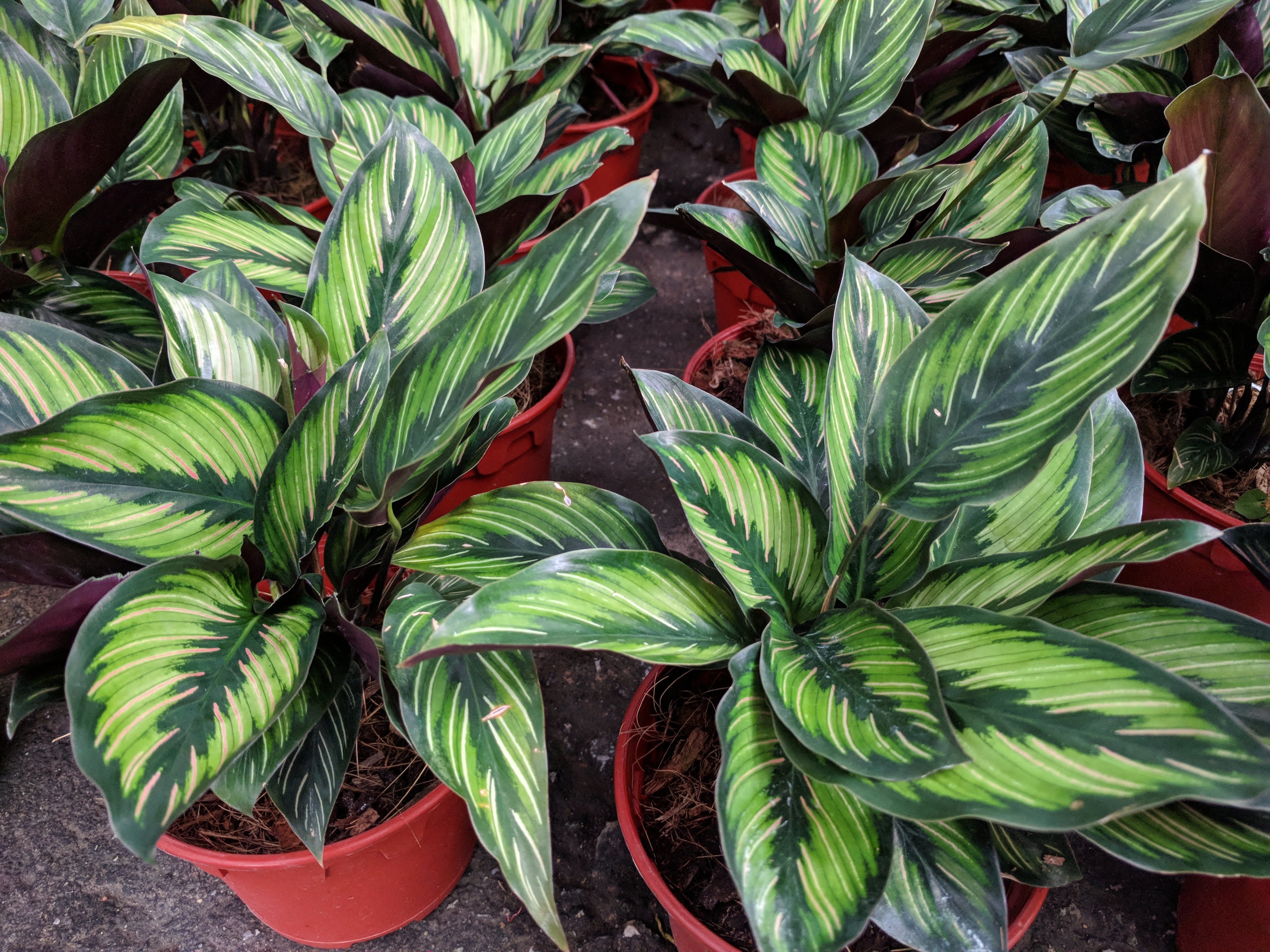Source www.apartmenttherapy.com
Welcome to our comprehensive guide on caring for calathea plants indoors. Calatheas are stunning houseplants that can beautify any space with their vibrant foliage. Not only are they visually appealing, but they also have unique characteristics that make them a favorite among plant enthusiasts. Whether you’re a seasoned plant parent or a beginner looking for an exciting addition to your indoor garden, this article will provide you with all the essential tips and tricks to ensure your calathea thrives in the comfort of your home.
Calatheas, also known as prayer plants, are native to the tropical regions of Central and South America. These fascinating plants are prized for their decorative leaves, which come in various patterns, colors, and shapes. In addition to their aesthetic appeal, calatheas are also known for their ability to “pray” – their leaves fold up in the evening and open back up in the morning, giving a mesmerizing display of movement.
1. Choosing the Right Location
Understanding Light Requirements
Calatheas thrive in bright, indirect light. Direct sunlight can scorch their delicate leaves, so it’s best to place them a few feet away from windows or in spots where they receive filtered sunlight. North or east-facing windows are ideal for calatheas as they provide gentle morning or evenly diffused light throughout the day.
However, if you don’t have access to sufficient natural light, you can supplement it with artificial lighting. Use fluorescent or LED grow lights specifically designed for indoor plants to provide the necessary light intensity and spectrum.
Humidity Matters
One of the key factors in caring for calatheas is maintaining a humid environment. These tropical plants thrive in high humidity, preferably around 60-70%. In drier climates, you can increase humidity by using a humidifier or placing the plant on a tray filled with water and pebbles. Regularly misting the leaves can also help to some extent, but be cautious as excessive misting can lead to fungal diseases.
2. Proper Watering Techniques
Watering Frequency
Calatheas prefer consistently moist soil, but they don’t like to sit in water. Overwatering can lead to root rot, while underwatering can cause the leaves to dry out. As a general rule, water your calathea when the top inch of soil feels slightly dry to the touch. Avoid letting the soil completely dry out, but also make sure it’s not overly saturated.
The frequency of watering will depend on various factors such as temperature, humidity, pot size, and the specific calathea variety. It’s important to observe your plant’s foliage and adjust the watering schedule accordingly. Always use room temperature water to avoid shocking the plant.
Proper Watering Technique
When watering your calathea, thoroughly moisten the soil until excess water drains out from the bottom. Discard any standing water in the saucer to prevent the roots from sitting in water. It’s important to use a well-draining potting mix to ensure adequate drainage and prevent waterlogged soil.
3. Maintaining the Ideal Climate
Temperature
Calatheas thrive in warm temperatures between 65-85°F (18-29°C). Avoid placing them in drafty areas or near air conditioning vents, as sudden temperature fluctuations can stress the plant. Consistent temperatures and moderate humidity will ensure healthy growth and vibrant foliage.
Air Circulation
While calatheas appreciate a humid environment, they also require good air circulation. Stagnant air can invite pests and lead to fungal growth. Ensure that the plant is placed in a well-ventilated area and consider using a fan to improve air circulation if necessary.
Table: Calathea Varieties and Their Care Requirements
| Variety | Light Requirements | Temperature Range (°F) | Humidity Preferences (%) |
|---|---|---|---|
| Calathea orbifolia | Bright, indirect light | 65-80 | 60-70 |
| Calathea medallion | Bright, indirect light | 65-80 | 50-60 |
| Calathea zebrina | Indirect light | 60-85 | 50-70 |
| Calathea lancifolia | Bright, indirect light | 70-80 | 60-70 |
FAQs About Calathea Plant Care Indoors
Q: How often should I fertilize my calathea?
A: Calatheas benefit from monthly fertilization during the growing season (spring and summer). Use a balanced, water-soluble fertilizer diluted to half the recommended strength. Avoid over-fertilization as it can cause leaf burn.
Q: Why are the edges of my calathea’s leaves turning brown?
A: Browning leaf edges are usually a sign of low humidity or inadequate watering. Increase humidity levels around your calathea and ensure you are watering consistently, avoiding both underwatering and overwatering.
Q: Can I propagate my calathea?
A: Yes, calatheas can be propagated through division. Carefully remove the plant from its pot and separate the clumps into smaller sections, ensuring each section has healthy roots. Plant the divisions in separate pots with well-draining soil and provide the same care as mature plants.
Q: Are calatheas toxic to pets?
A: Calatheas are considered non-toxic to cats and dogs. However, it’s still best to keep them out of your pets’ reach to avoid any accidental ingestion or unhinged playful encounters.
Q: Why is my calathea not praying?
A: Calatheas exhibit leaf movements also known as nyctinasty, but various factors can influence this behavior. Inconsistent light, temperature extremes, or stress can cause the plant to stop praying. Ensuring the plant’s overall health and replicating its natural environment can encourage this fascinating movement.
Conclusion
Caring for calatheas indoors can be a rewarding and enjoyable experience. By providing the right balance of light, humidity, and water, you can ensure your calathea thrives and showcases its mesmerizing foliage. Remember to choose a suitable location, observe proper watering techniques, and create an ideal climate for your beloved plant. With dedication and patience, you’ll be rewarded with a flourishing calathea that adds a touch of tropical elegance to your home.
